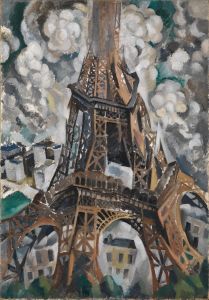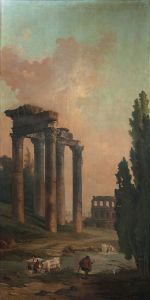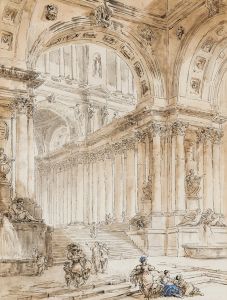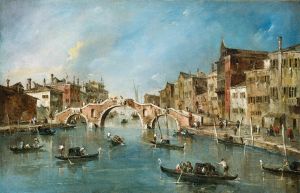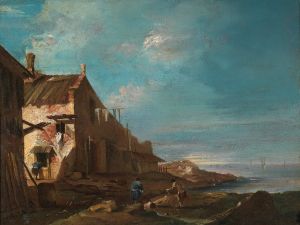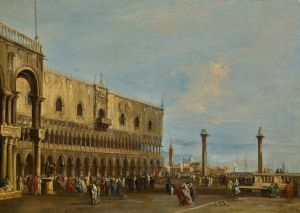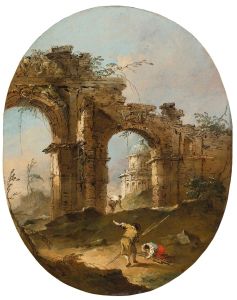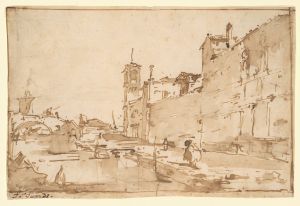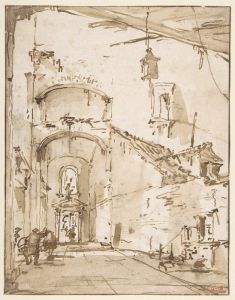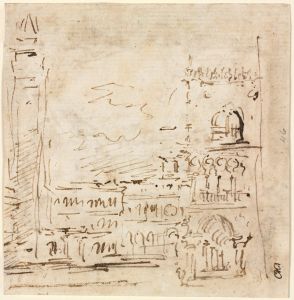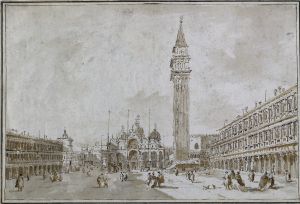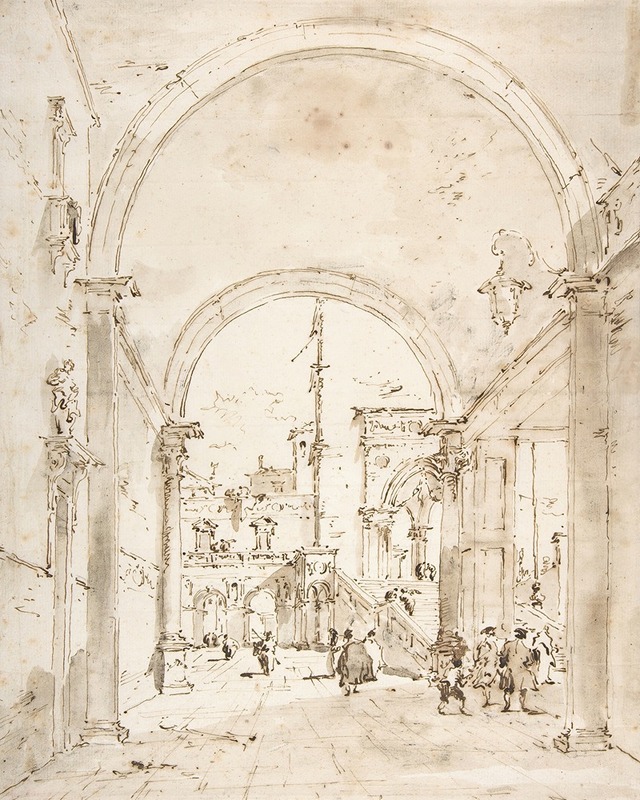
Architectural Capriccio; Grand Staircase Seen through an Archway
A hand-painted replica of Francesco Guardi’s masterpiece Architectural Capriccio; Grand Staircase Seen through an Archway, meticulously crafted by professional artists to capture the true essence of the original. Each piece is created with museum-quality canvas and rare mineral pigments, carefully painted by experienced artists with delicate brushstrokes and rich, layered colors to perfectly recreate the texture of the original artwork. Unlike machine-printed reproductions, this hand-painted version brings the painting to life, infused with the artist’s emotions and skill in every stroke. Whether for personal collection or home decoration, it instantly elevates the artistic atmosphere of any space.
"Architectural Capriccio; Grand Staircase Seen through an Archway" is a painting by the renowned Italian artist Francesco Guardi. Guardi, born in Venice in 1712, is celebrated for his vedute, or detailed paintings of cityscapes, which often depicted the grandeur and decay of Venice. He was a prominent figure in the Venetian school of painting during the 18th century and is considered one of the last practitioners of the classic Venetian school.
This particular work, "Architectural Capriccio; Grand Staircase Seen through an Archway," is an example of Guardi's capricci, a genre that combines real architectural elements with imaginative and fantastical ones. The painting showcases a grand staircase viewed through an archway, a common theme in Guardi's capriccios, which often featured elaborate and whimsical architectural compositions.
The painting is characterized by its intricate detailing and the use of light and shadow to create a sense of depth and perspective. Guardi's skillful brushwork and his ability to capture the play of light on architectural surfaces are evident in this work. The staircase, with its elegant curves and ornate balustrades, leads the viewer's eye into the composition, inviting them to explore the imagined space beyond the archway.
Guardi's capriccios were not intended to represent specific locations but rather to evoke a sense of wonder and fantasy. They often included elements of classical architecture, such as columns, arches, and ruins, combined in imaginative ways. This approach allowed Guardi to experiment with composition and perspective, creating visually engaging and thought-provoking works.
"Architectural Capriccio; Grand Staircase Seen through an Archway" reflects the influence of Guardi's predecessors, such as Canaletto, who was known for his precise and detailed vedute of Venice. However, Guardi's style is more fluid and expressive, with a looser brushwork that lends a sense of movement and atmosphere to his paintings. This stylistic difference sets Guardi apart from his contemporaries and contributes to the unique charm of his works.
The painting is part of a larger body of work by Guardi that includes both vedute and capricci. While his vedute often depicted recognizable Venetian landmarks, his capricci allowed him greater creative freedom to explore fantastical and imaginative themes. This duality in Guardi's oeuvre showcases his versatility as an artist and his ability to capture both the real and the imagined with equal skill.
"Architectural Capriccio; Grand Staircase Seen through an Archway" is a testament to Guardi's talent and his contribution to the tradition of Venetian painting. His works continue to be admired for their technical mastery and their ability to transport viewers to a world of architectural fantasy. Today, Guardi's paintings can be found in major art collections and museums around the world, where they continue to inspire and captivate audiences with their timeless beauty and imaginative compositions.





